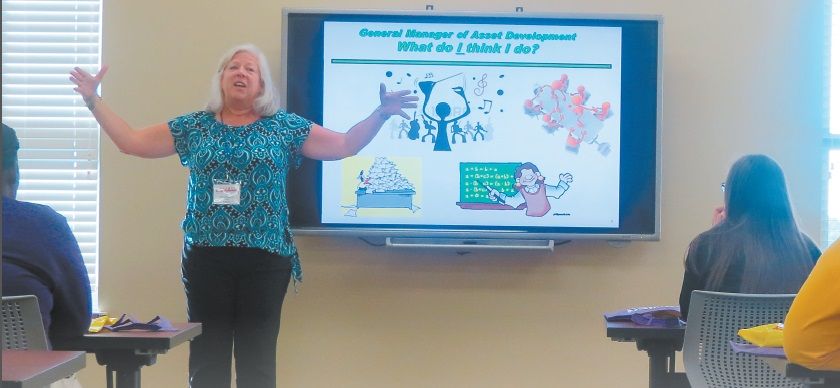
UPDATED: Injured football player ‘responding’, but still in critical condition
September 30, 2015
Alfreda Richoux
October 6, 2015A group of female sophomores from Thibodaux High School filled seats inside a second-floor classroom Friday at Fletcher Technical Community College’s BP Integrated Production Technologies Building, eager to learn more about the opportunities available to them in the oil and gas industry.
The day-long Females Fueling Our Workforce event, sponsored by South Central Industrial Association’s Work It! Louisiana, which will be repeated Friday, gave students from Assumption, Lafourche, St. Mary and Terrebonne parishes a chance to hear from women currently working in the industry and how they too could one day pursue such career paths.
“We’re really excited to provide this opportunity to the students,” Fletcher College and Career Transitions Coordinator Nicol Blanchard said. “We have some really big-name companies that are here to tell them what is available and let them know that females can do these jobs.”
Rebecca Winkel and Tara Anderson of the American Petroleum Institute (API), a national trade association representing all aspects of the industry, shared information from a recent research project that examined the climate of working females in regards to their perceptions of the oil and gas industry. IHS, a Washington, D.C.-based research company that provided information to API, indicated that 1.3 million oil and gas jobs were and will be available between 2010 and 2030, but only 185,000 were projected to go to women.
“We were looking at this research and going, ‘Well, I love my job and you love your job, so why don’t we have more women in oil and gas?’” Winkel, an economic policy analyst for the institute, said.
API, with the help of survey and political strategy research firms, took this information and conducted focus groups and national surveys with women ages 18-44 to find out what exactly was holding them back from pursuing such careers. Of the women polled, only 3 percent reported applying for a job in the industry, a statistic, Richardson said, indicates females simply don’t know the opportunities available to them.
Once those surveyed were presented with information showing career opportunities with a breakdown of sample salaries and job descriptions, they began to realize the potential, she added. “Their faces changed,” Richardson, director of external mobilization, said of the information, which outlines jobs for everyone from public relations majors to nursing majors, as well as those with industry-specific degrees. “They got excited because they thought, ‘This is my background. I can do this. I can be a woman of oil and gas.’”
Students also heard from women working for the types of companies API represents.
Shelley Piehet, public awareness representative for Shell Pipeline Corporation, discussed her community outreach job duties, which include disseminating information on pipeline safety through presentations and planning events. She also keeps in communication with the company’s stakeholders and emergency responders to keep them notified, educated and safe. With a business degree she said she has very fulfilling career, one that the students could obtain with motivation and desire to succeed.
“Whatever degree you go to, you do have to work for it,” Piehet explained. “Look at everything you can do. Don’t underestimate what a career as an engineer is about or what a career as a geologist is about, or one with a business degree. My business degree has put me in a lot of great places and brought me to a lot of great jobs. It’s how you present yourself and what you want to do.”
Marcia Houghton, general manager of asset development for Chevron, encouraged the students to look at their current interests and let that fuel their decision in a college degree program or job path. Houghton, who noted writing, theater and reading among her young adult interests, combined her passions into a career that now affords her the opportunity to travel internationally and manage the day-to-day operations of 300 employees.
“You would not believe the type of people that work in this industry,” Houghton said. “We have the ones you think of like scientists and engineers, but we also have doctors, nurses, security people, finance people, lawyers … There are lots of different people working in the industry that you would not imagine. The door is open.
Following the presentations, students also toured the building’s 4,000 square foot training laboratory. Fletcher students and faculty demonstrated how some of the approximately $500,000 worth of state-of-the-art equipment is used to better prepare students for more manual labor-type jobs in oil and gas. The building opened in March 2014 and serves as a hub for the college’s oil and gas-related education and training.









